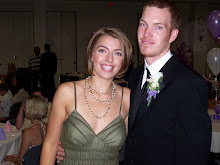(WRITTEN BY THE GEORGE MASON UNIVERSITY WRITING PROJECT)
Read the poem once straight through—and read it aloud. Don’t linger over things that confuse you. Read slowly—more slowly than you would read most prose—but keep going. Try to get an overall idea of what the poem is saying, at least on the surface.
Read the poem again with pen or pencil in hand. Circle unfamiliar words, phrases, images that strike you, and/or interesting moments. Mark places where patterns appear and/or more than one reading is possible. Ask questions in the margins. Don’t be afraid to write all over the poem and the page. Draw pictures or diagrams, whatever is useful.
Bother the reference librarians. Look up anything you don’t understand: an unfamiliar word (or an ordinary word used unfamiliarly), a place, a myth, an idea—anything the poem uses. Assume there is a reason for everything, from the space between words to the period at the end of the line.
Paraphrase the poem. One line at a time, restate the poem in your own words. This can help you understand obscure passages. Also notice, though, how paraphrasing may reduce the forcefulness of some lines and remove interesting double meanings from the poem.
Ask yourself, “what makes me think ______ is _____?” When you come to a conclusion about a poem, write down the specific details that made you come to that conclusion. If the tone seems somber to you, write down the details, images, word choice, etc that makes you feel that way. If you think the poem means X, make notes of the things that make you think it means X.
Imagine the poem as something someone says, or could say, in a given situation; most poems are imitations of speech. That’s why, “Who’s the speaker?” is usually the first question asked about a poem. It’s also a reason why reading the poem aloud is important. Try to identify the poem’s situation. What is said is often conditioned by where it is said, and by whom.
Identifying the speaker and his/her place in the situation puts what s/he says into perspective. Find out what is implied by the traditions behind the poem. Verse forms and metrical patterns all have frames of reference, traditions in the way they are usually used, and for what reasons they are used.
Learn more about the poem’s author, and about other poems by the author. Consider how this poem relates to other work by the poet, and how it might be connected to (or diverge from) incidents in the poet’s life.
Articulate for yourself what the title, subject, and situation make you expect. Poets often use false leads and try to surprise you by doing “shocking” things, but defining expectations lets you be conscious of where you are when you begin.
Be willing to be surprised. Things often happen in poems that turn them around. A poem may suggest one thing at first, then persuade you to its opposite (or at least be a significant qualification or variation).
Take a poem on its own terms. Adjust to the poem; don’t make the poem adjust to you. Be prepared to hear things you do not want to hear. Not all poems are about your ideas, nor will they always present emotions you want to feel. Be tolerant and listen to the poem’s ideas. Argue. Discussion usually results in clarity and keeps you from depending on personal biases and preoccupations, which sometimes mislead even the best readers. Talking a poem over with someone else (especially someone different) can expand the limits of a too-narrow perspective.


No comments:
Post a Comment